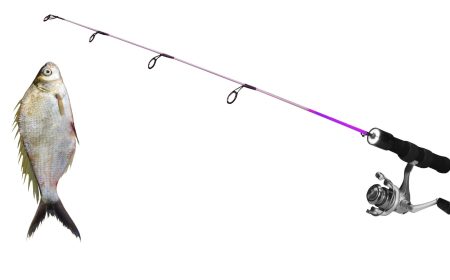Project Report For Fishing Rod
Introduction
Project Report for Fishing Rod is as Follows
Fishing rods are available in a variety of lengths, materials, and designs to accommodate a variety of fishing demands. When selecting a fishing rod, the two most important elements to consider are the type of fish you wish to catch and the fishing environment. The size and strength of the rod you require will be determined by the sort of fish you’re chasing, while the habitat will govern the type of rod you should use.
A fishing rod’s length can range from a few feet to more than 12 feet. Longer rods are better for long casts and wide water fishing, but shorter rods are better for fishing in confined quarters or capturing little fish. The action of the rod, or the degree of flex in the rod when pressure is applied, is likewise affected by its length. A fast-action rod bends largely at the tip, whereas a slow-action rod bends all the way down the rod. The rod’s motion is crucial because it influences sensitivity and casting distance.
Fishing rods are available in a variety of lengths, Fishing Rod materials, and designs to accommodate a variety of fishing demands. When selecting a fishing rod, the two most important elements to consider are the type of fish you wish to catch and the fishing environment. The size and strength of the rod you require will be determined by the sort of fish you’re chasing, while the habitat will govern the type of rod you should use.

Types Of Fishing Rod
- Spinning Rod: Spinning rods are the most popular type of fishing rod, especially among beginners. They’re ideal for novices since they enable lengthy throws with tiny lures and are fairly priced. It features an open-faced reel with a cover (bail) that flips up and down. Spinning rods may be identified by their tiny and lightweight construction, as well as the “eggbeater” spinning reel that hangs beneath the rods. Spinning reels beat spin casting reels in terms of accuracy, but fall short of baitcasting reels.
- Spin Caster: The spin-caster reel, like the spinning reel, has a fixed spool. To cast out the line, press the rear of the reel’s button and then let go to prevent the line from drawing out. Spin casters’ main shortcoming is that they do not throw as far or as precisely as other types of fishing reels. This is due in part to the reel’s design, which includes an enclosure that completely surrounds the spool and keeps all of the important components contained within.
- Bait Caster: The bait-caster is also unique, particularly in terms of reel operation. This reel is frequently referred to as a revolving-spool reel since it is perpendicular to the rod rather than parallel. The tackling method is considerably more difficult, necessitating training, knowledge, and proficiency before achieving fishing precision. It can capture any sort of fish as a more complex rod, but it is better for larger ones. It also gives you additional fishing line variety, albeit you will need to learn how to use other types of fishing lines with it (such as metal lines for trolling).
Get Completely Custom Bankable Project Report
Market Potential Of Fishing Rod
The size of the global market for fishing rods was estimated at USD 1.03 billion in 2021 and is anticipated to grow to USD 1.62 billion by 2030, with a CAGR of 5.13% from 2022 to 2030.
The worldwide market for fishing rods is expanding as a result of a sizable population’s growing choice to spend their holidays close to numerous fishing areas. As their name implies, fishing rods are tools used to tempt fish while fishing. To put it another way, fishing rods help people or other anglers catch fish. A hook is fastened to one end of the fishing rods and is held there by a flexible rope. Fish can be easily caught when using these hooks.
Fishing rods are available in a range of materials and can be purchased both in-store and online. The growing popularity of ice fishing is another new development affecting the fishing rod market. Ice fishing is becoming increasingly popular in countries with a large number of lakes and low weather, such as Norway, Bulgaria, France, and Canada. Competitions organised in many parts of the world contribute to this.

